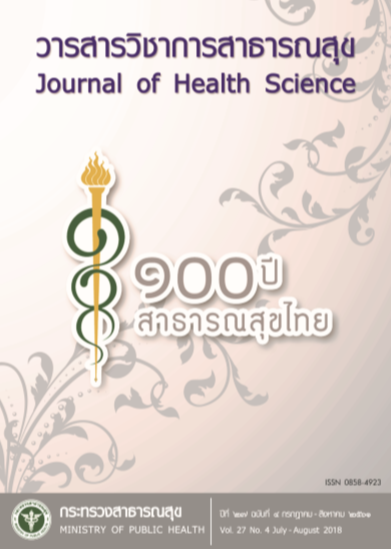Rehospitalization within 30 days after Thrombolytic Therapy among Acute Ischemic Stroke Patients
Keywords:
rehospitalization, acute ischemic stroke, thrombolytic therapyAbstract
Stroke patients not only have longer lengths of stay, but also higher rehospitalized (RH) rates. Moreover, after the beginning of the thrombolytic therapy era in Thailand, there are limited data about this condition. The objective of this study was to evaluate frequency and contributing factors for 30-day unplanned RH in acute ischemic stroke (AIS) patients treated with thrombolytic agent in Maharat Nakhon Ratchasima Hospital (MNRH).
It was conducted as a cohort study in the patients with AIS and treated with thrombolytic agent in MRH between January 2011 and December 2014, The RH was documented as the patients who were unplannedly admitted within 30 days after discharged from the initial-admission. The details on initial-admission and RH were collected and compared between RH and non-RH patients for identifying the factors associated with unplanned RH. A total of 238 patients with 128 males (53.8% were enrolled in this study. The 30-day RH occurred in 24 patients (10.1%) and about 80% presented within 15 days after discharged. The common causes of 30-day RH were pneumonia (41.6% ), recurrent stroke (16.6%) and cardiovascular event (16.6%).
The patients who developed pneumonia and intracerebral hemorrhage during initial admission were strongly associated with RH, with relative risk = 4.75 (2.31-9.76) and 3.47 (1.63-7.39), respectively. In conclusions, the rate of 30-day RH in AIS patients with thrombolytic therapy in MNRH was 10.1% (95%CI 6.3-13.9%) and about 80% of this event occurred within the first 15 days after discharge. Pneumonia (41.6%) was the most common causes of RH. The significantly associated factors for 30-day RH were pneumonia or intracerebral hemorrhage after thrombolytic treatment.
Downloads
Downloads
Published
How to Cite
Issue
Section
License
Copyright (c) 2018 Journal of Health Science- วารสารวิชาการสาธารณสุข

This work is licensed under a Creative Commons Attribution-NonCommercial-NoDerivatives 4.0 International License.







